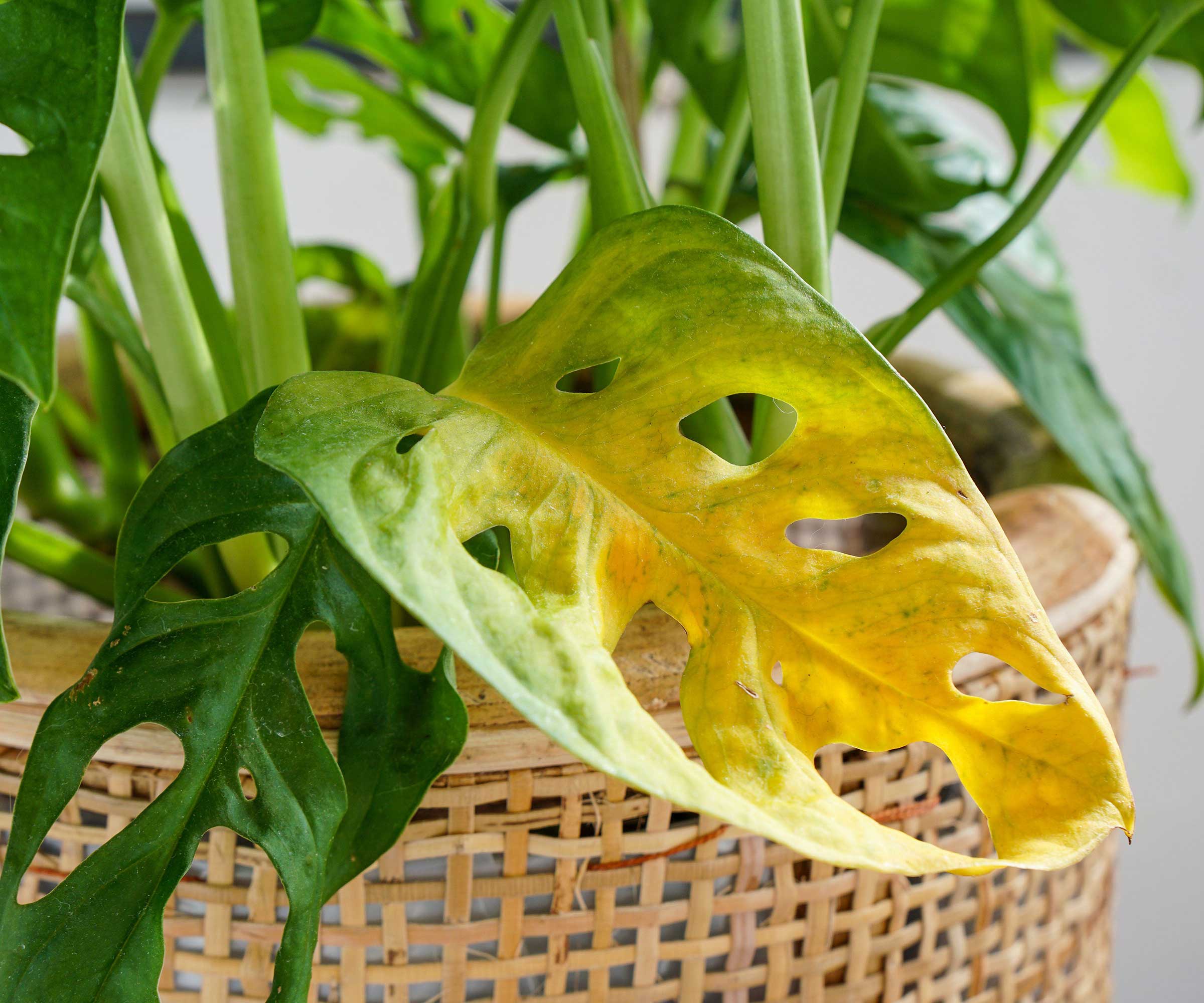
Root rot is often warned about in houseplant care guides, and for good reason. It's a problem that commonly occurs, and can kill plants if not addressed quickly.
The issue develops when indoor plants are growing in overly wet conditions. The fungal or bacterial pathogens that cause root rot thrive in saturated soil, explains Kiersten Rankel from Greg, a houseplant-care app. These pathogens infect the plants' roots, and can then colonize and cause the root tissue to die. This cuts off the plants' water and nutrient supply, she says.
Symptoms of root rot include stunted growth and wilted and discolored leaves that may start falling off. Stems and foliage can also become soft and mushy. Of course, some of these signs can be caused by other issues, too. But, if you suspect you've overwatered your plant, root rot is likely to blame.

An expert guide to houseplant root rot
Luckily, root rot is quite easy to avoid. Plus, it's often possible to save your houseplants if you catch it early. Below, the experts explain all you need to know.
Preventing root rot

First, pay attention to the potting soil you use – a fast-draining mix will help prevent waterlogged conditions. 'A handful of sand, perlite, or bark will go a long way in facilitating aeration and drainage,' says Kiersten. We like the look of this organic perlite from Perfect Plants Nursery at Amazon.
'When potting up a houseplant, do not compact the soil as this will lead to a lack of airflow and decreased drainage,' adds Anna Ohler, the owner of Bright Lane Gardens nursery. Using a pot with drainage holes is also important.
You'll need to check how often you water your houseplants, too. Many require the top inch or so of soil to dry out before being watered again, so it's worth doing your research for each plant variety. Using a moisture meter, available from The Sill, can be useful to gauge when – and when not – to hydrate your plants.
Finally, the right location can help to prevent problems with root rot. As Kiersten explains, adequate sunlight can help dry soil faster between waterings.
Top tip: 'When purchasing new plants, carefully inspect them,' recommends Nastya Vasylchyshyna, a resident botany expert at Plantum. 'The soil should not smell of dampness or rot, and the medium should be moderately moist or dry, but never wet and soggy.'
What to do if your plant has root rot

If you've spotted a struggling houseplant, you may be able to rescue it.
First, confirm that root rot is definitely the problem you're dealing with. 'Gently unpot it and check the roots,' says Kiersten. 'Rotted roots will appear brown and mushy and may smell a bit bad. They will pull away from the plant with just a gentle tug. Healthy roots will be bright white and firm. If you see rotted roots, gently remove them with sterilized shears.'
'If the symptoms of the disease also appear on the leaves, prune the affected areas,' says Nastya.
Next, repot the plant in fresh, well-draining soil, ensuring that the pot has proper drainage and has been sterilized if you’re using the same planter, instructs plant expert Paris Lalicata from The Sill. You can then treat the soil and the leaves of your plant with a fungicide (such as this one from The Sill), she says.
'Water very sparingly for a few weeks,' Anna adds.
FAQs
Which plants are most susceptible to root rot?
'Succulents and cacti are especially prone to root rot,' says Kiersten. This is because their shallow root systems readily suffocate in wet soil, she explains.
'Many tropical plants like ficus and palms are also susceptible to root rot,' Kiersten adds. 'Plants that grow in humid environments are more resistant, like pothos or ferns.'
Can outdoor plants get root rot?
Yes, this problem occurs with outdoor plants too, particularly if they are planted in a heavy type of soil or in a container garden. Amending borders with grit and compost, and putting pots onto pot feet, such as these non-slip ones from UFelice at Amazon, can help reduce the risks.
Root rot is just one issue to look out for when caring for an indoor garden. Be on the lookout for houseplant pests, too, which can get out of hand if not treated quickly.







